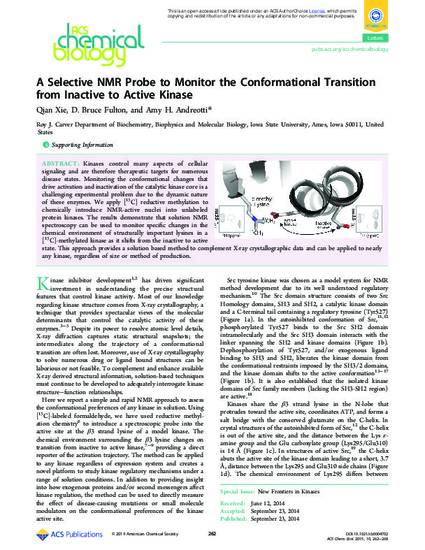
Kinases control many aspects of cellular signaling and are therefore therapeutic targets for numerous disease states. Monitoring the conformational changes that drive activation and inactivation of the catalytic kinase core is a challenging experimental problem due to the dynamic nature of these enzymes. We apply [13C] reductive methylation to chemically introduce NMR-active nuclei into unlabeled protein kinases. The results demonstrate that solution NMR spectroscopy can be used to monitor specific changes in the chemical environment of structurally important lysines in a [13C]-methylated kinase as it shifts from the inactive to active state. This approach provides a solution based method to complement X-ray crystallographic data and can be applied to nearly any kinase, regardless of size or method of production.
Available at: http://works.bepress.com/amy_andreotti/14/

This article is from ACS Chemical Biology 10 (2014): 262, doi:10.1021/cb5004702. Posted with permission.